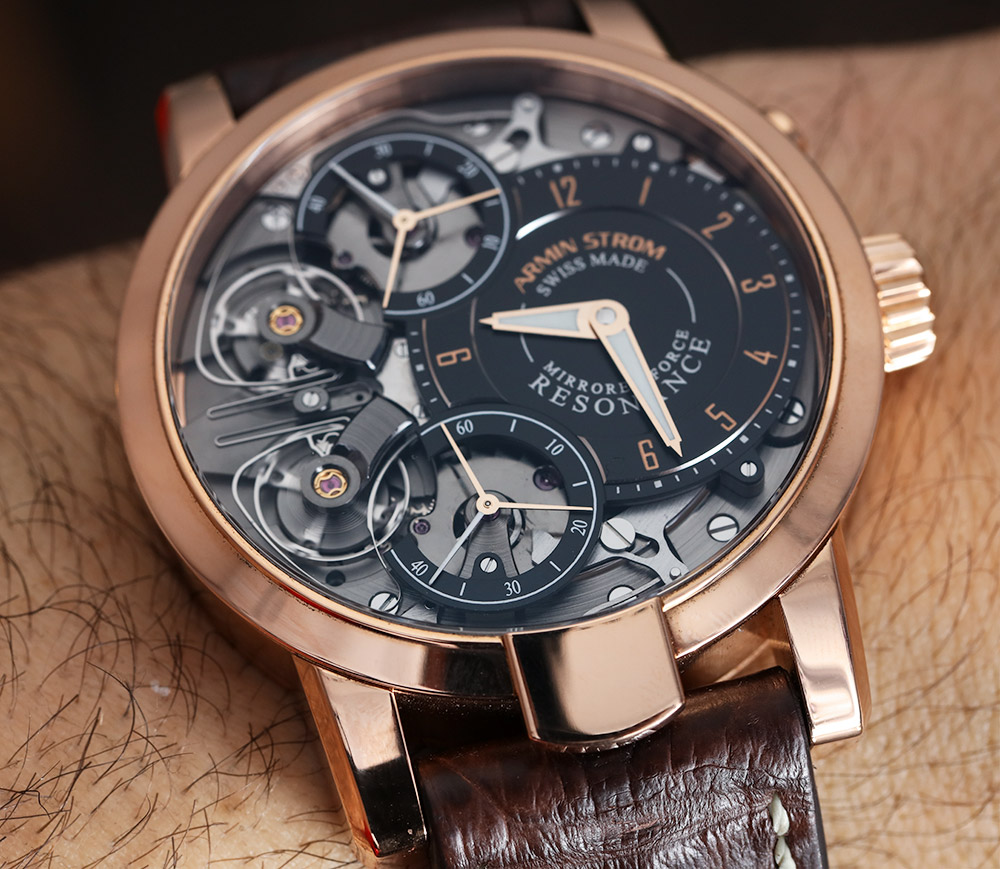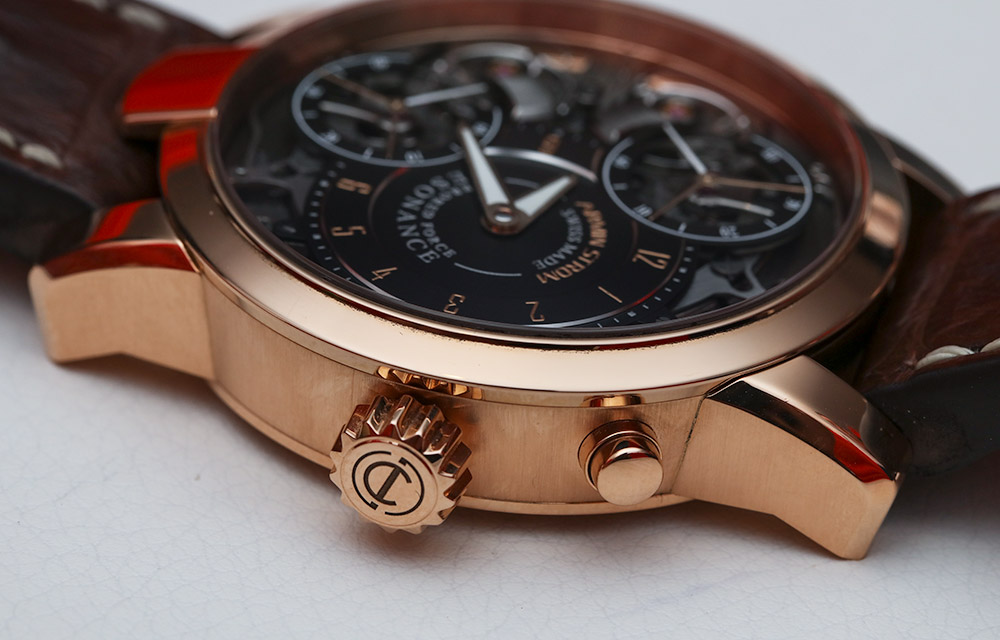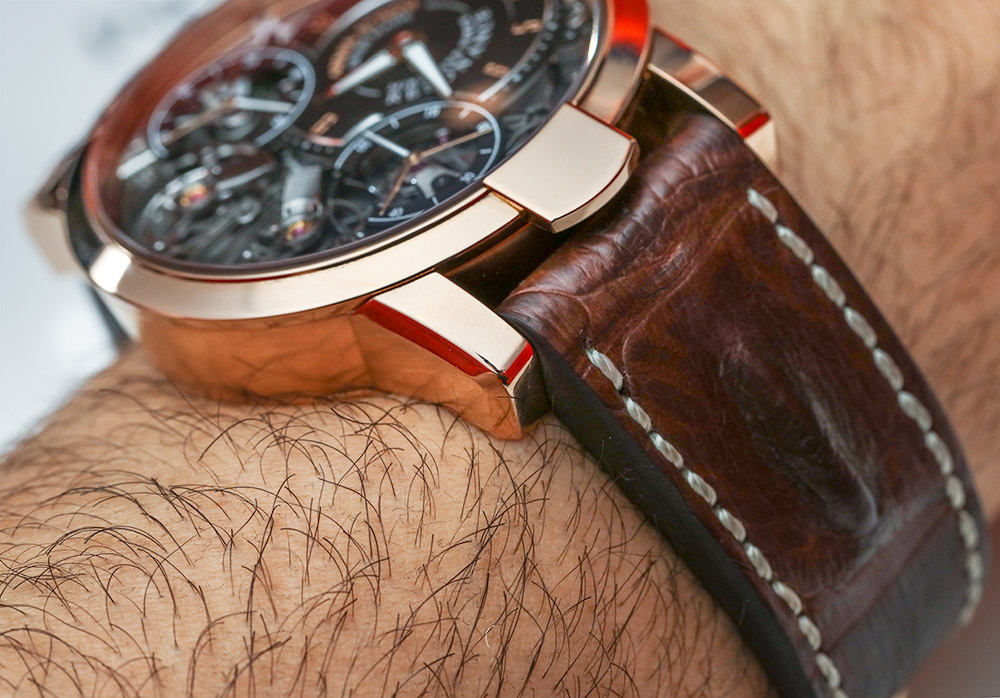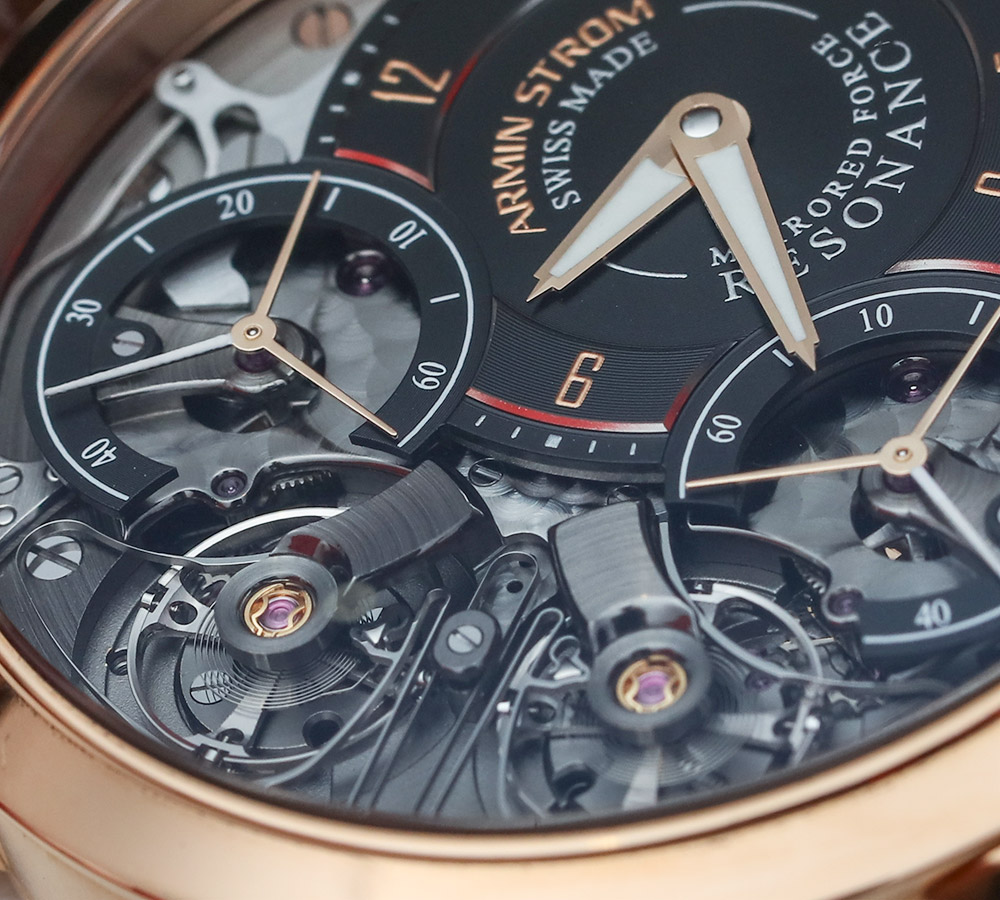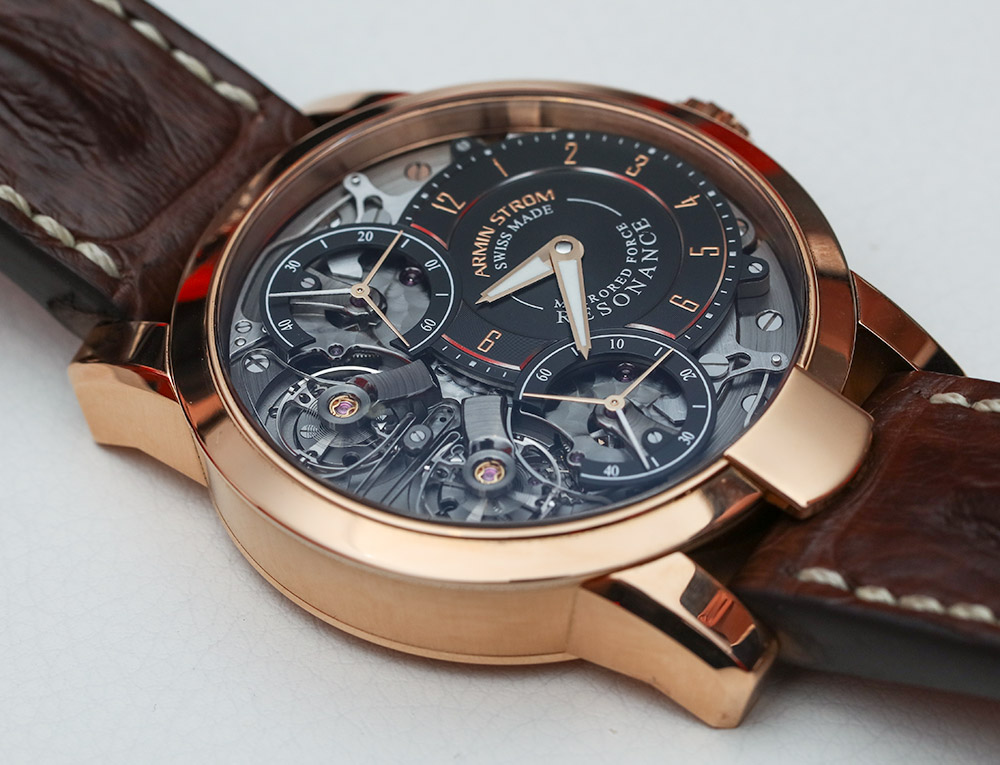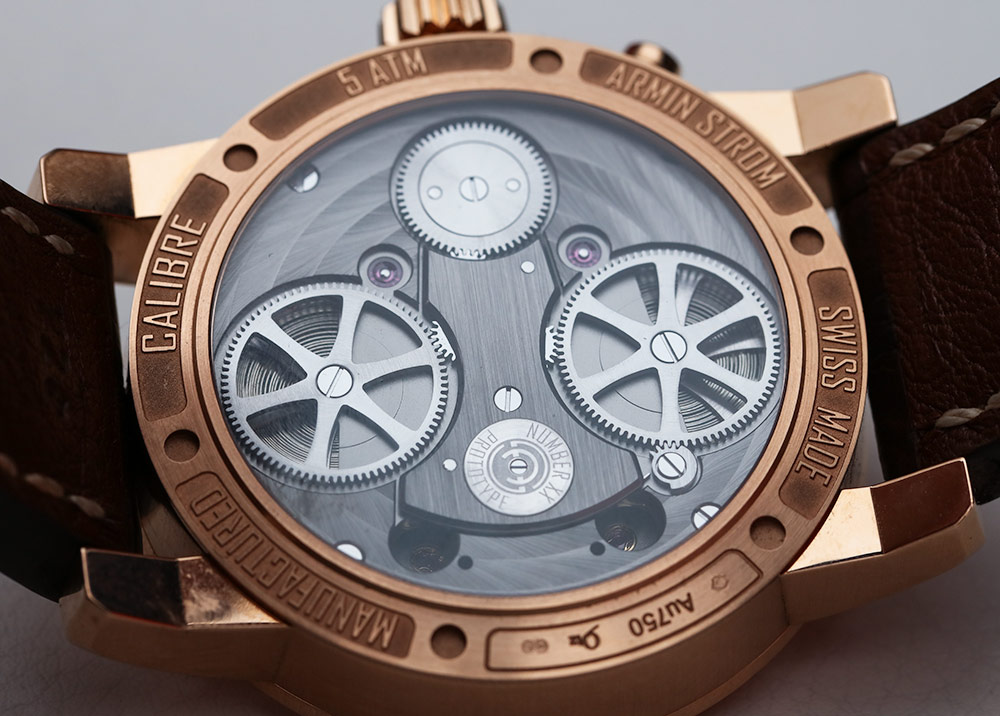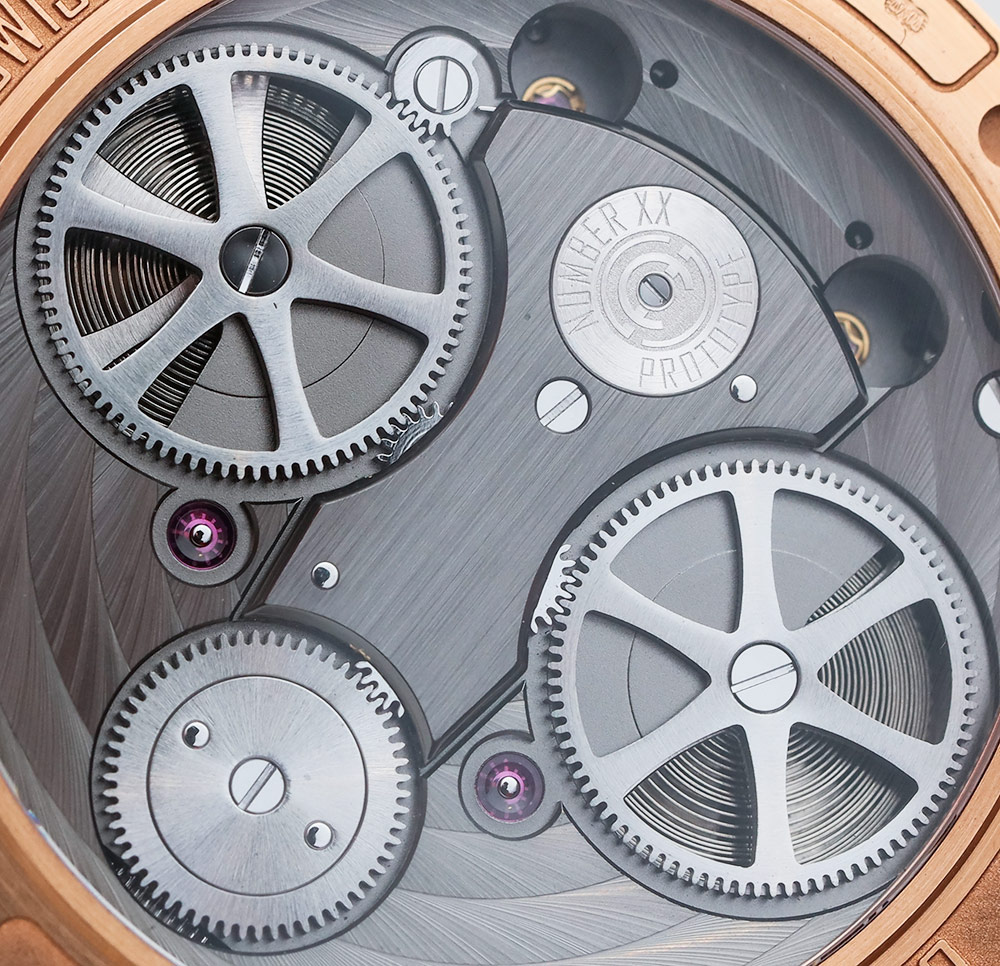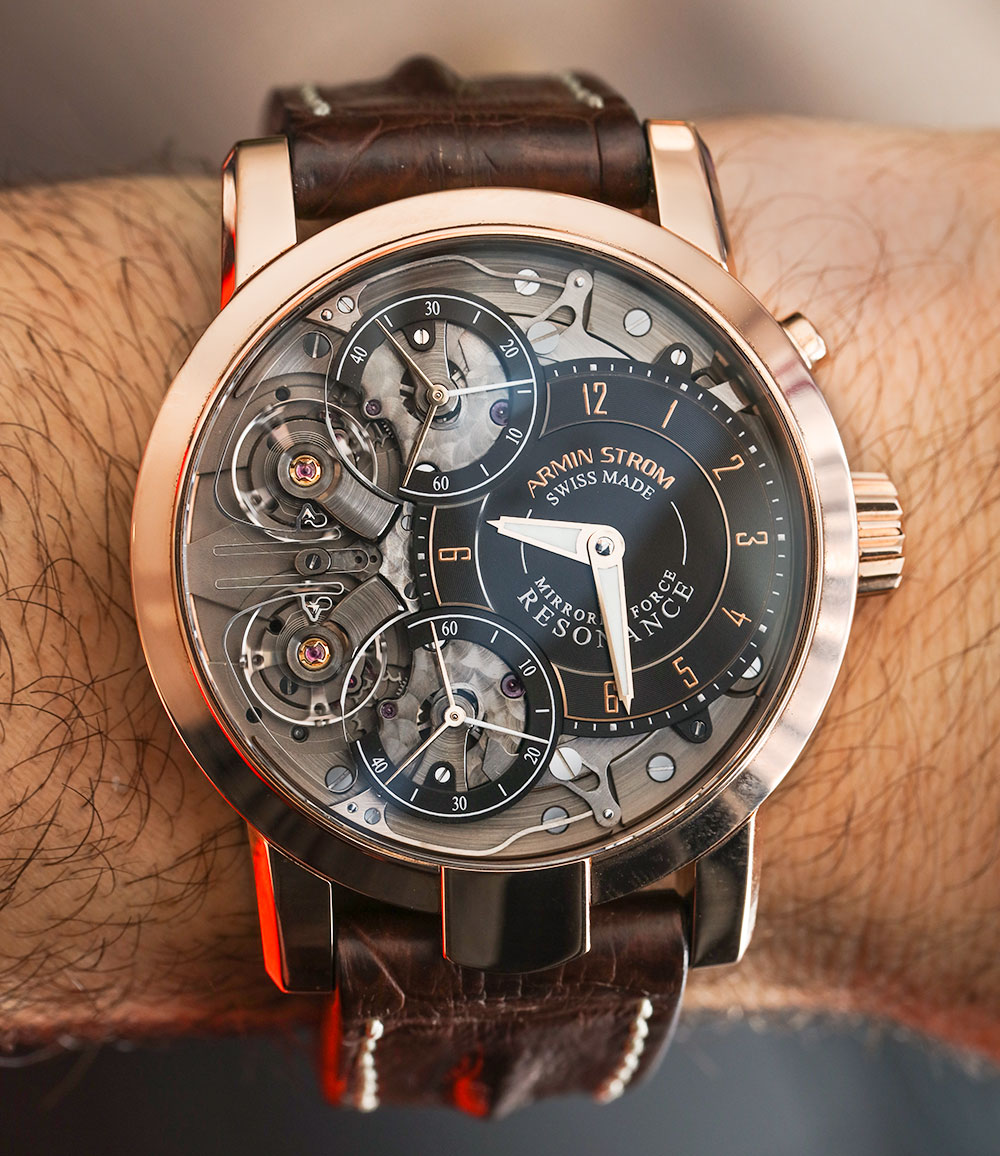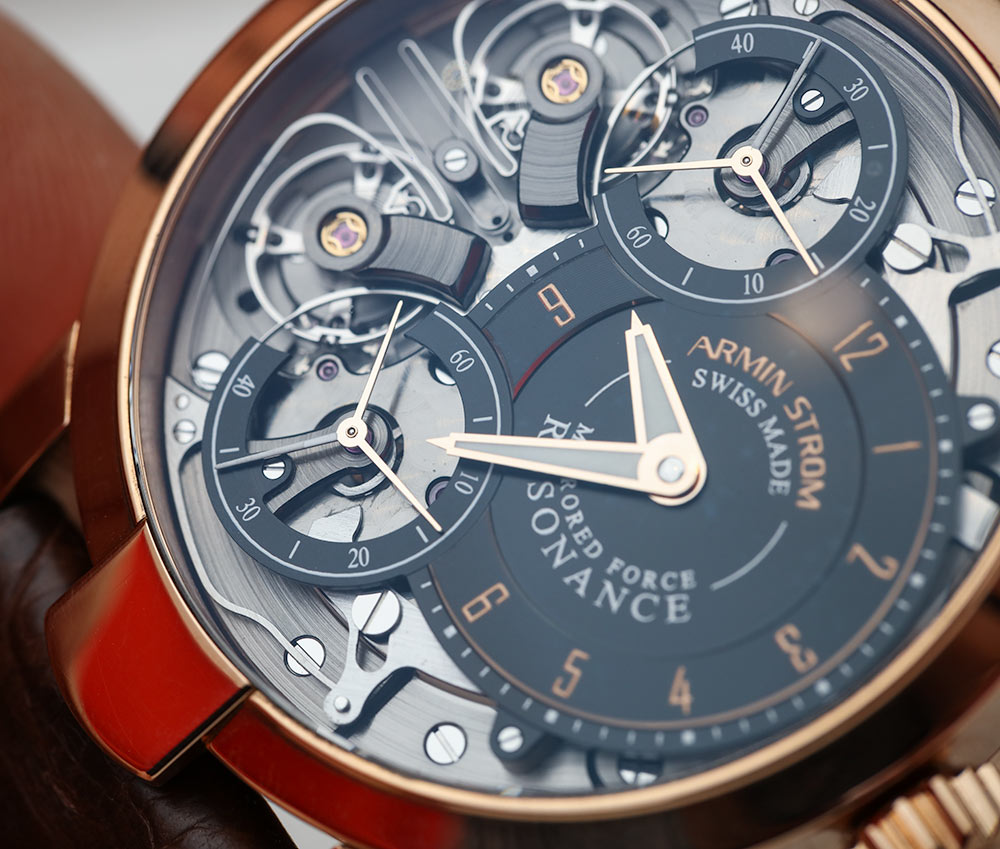
Despite the visible balance wheels, the dial remains very legible. The right half of the dial houses the sub dial that tells the time. The hour and minute hands are made out of rose gold. They are chunky and are painted with luminescent material to ensure legibility in low light conditions. The sub dial is black and the hours are marked by Arabic numerals in rose gold (black and rose gold is a winning combination for me). The brand and the model of the watch form a smaller circle within the dial. I’m not so sure I need to be reminded of the watch’s name on the dial, but this isn’t a deal-breaker for me. That said, I would however, prefer a cleaner design.
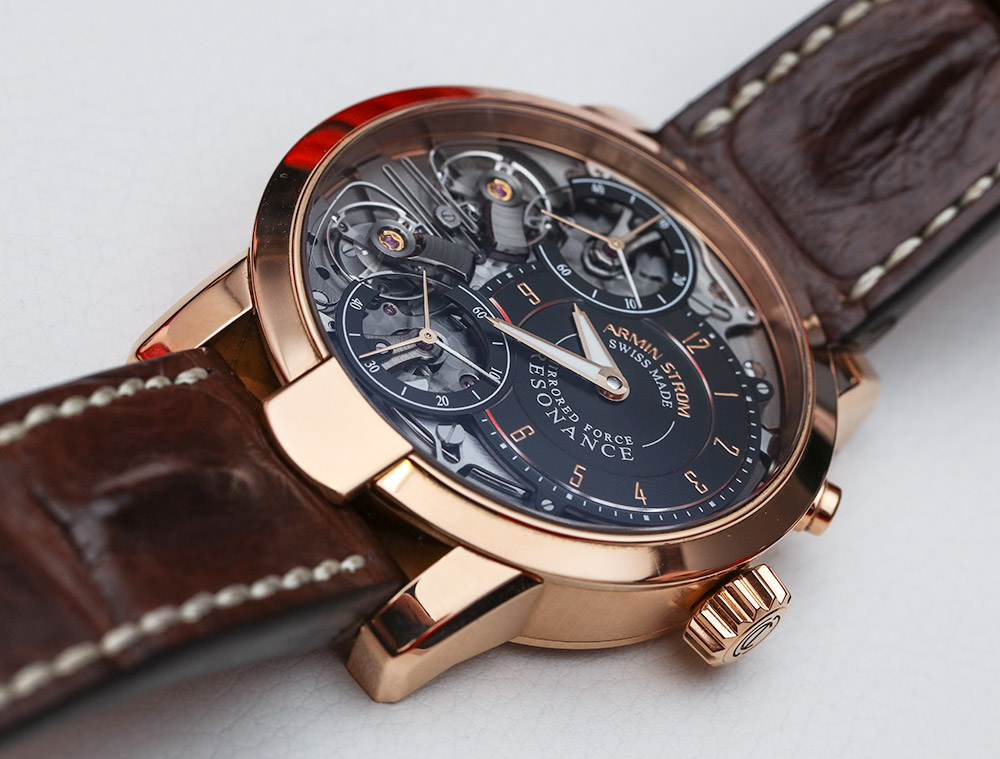
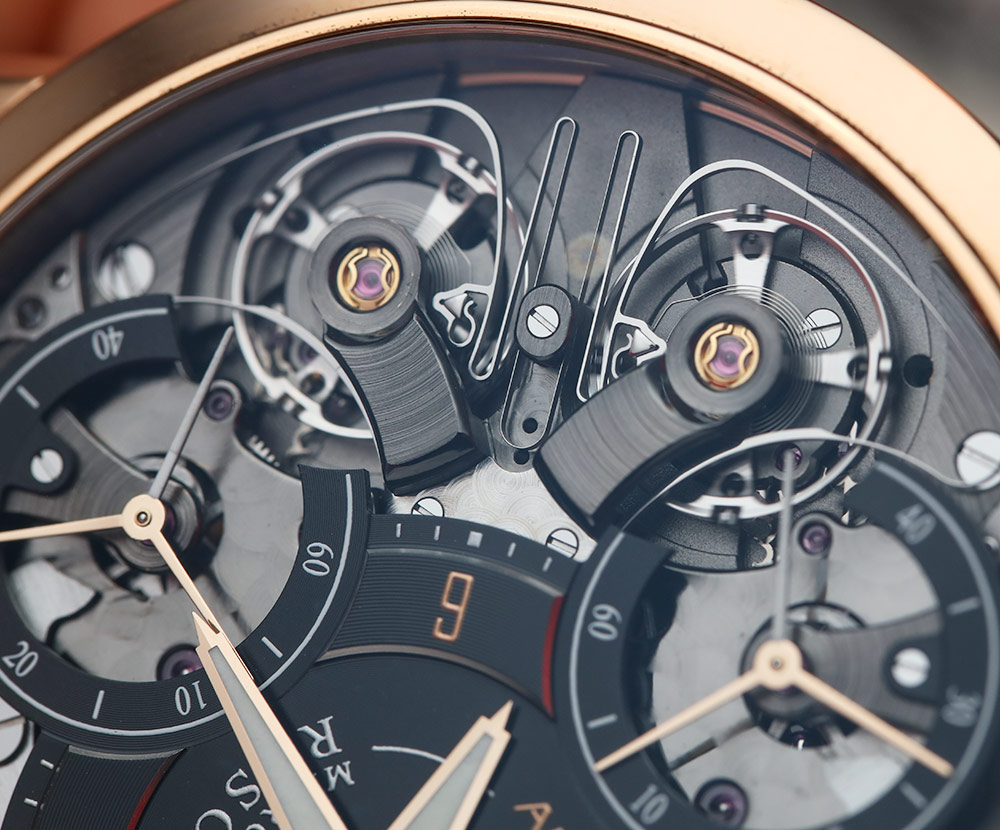
To the left are two subsidiary seconds dials with very cool-looking triple-spoke seconds hands. What’s even neater is that the second hands spin in opposite directions. The top hand spins counter-clockwise, while the lower hand goes in a clockwise direction. It creates a rather nice looking effect. According to Armin Strom, it takes less than 10 minutes for the effects of resonance to take hold of the two running seconds hands, after which you will see them beating in unison.
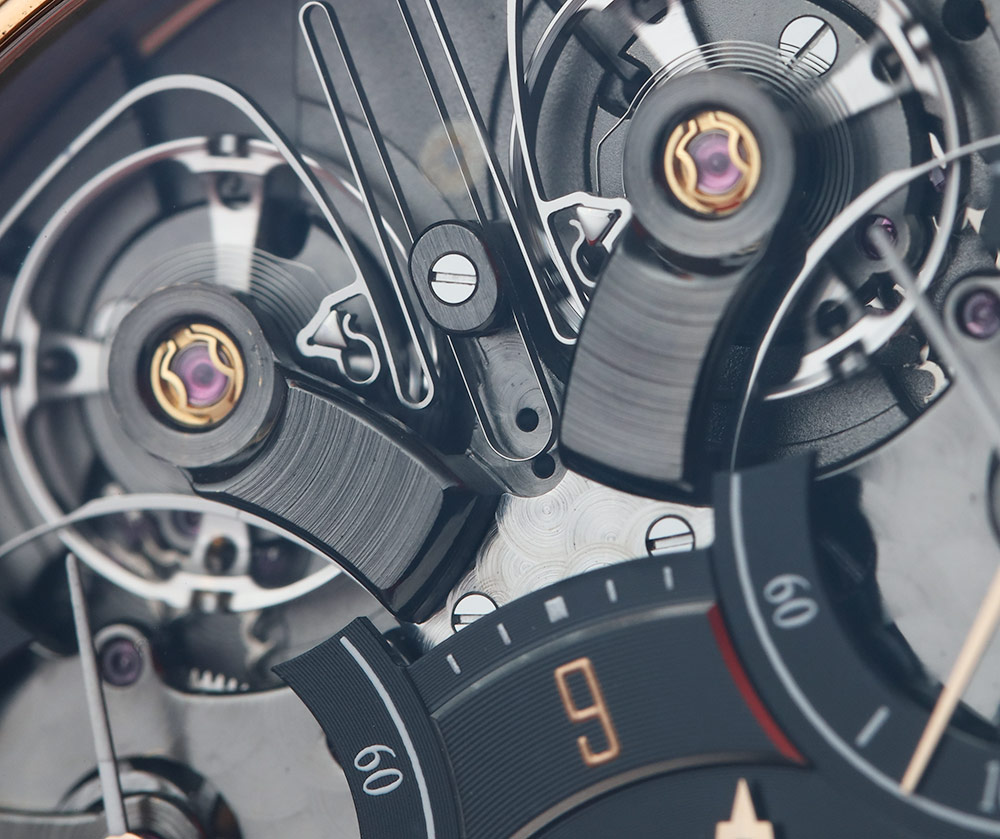
And further to the left of the two subsidiary seconds dials are the stars of the watch – the two resonating balance wheels. The two wheels oscillate at a rather unusual rate of 25,200bph, but what’s really unique about it is the patented resonance clutch that connects the two balance wheels via the balance spring studs (the ends of the balance spring). This clutch enables the transmission of vibrational forces between the two balance wheels, allowing them to find a natural rhythm so that they can beat in unison. This clutch, made out of steel, is also what sets the Mirrored Force Resonance watch apart from its contemporaries. Instead of a clutch or connecting mechanism, both F.P. Journe’s Chronomètre à Résonance watch and Beat Haldimann’s H2 Flying Resonance are concerned with adjusting the distance of the two oscillators to generate the effects of resonance.
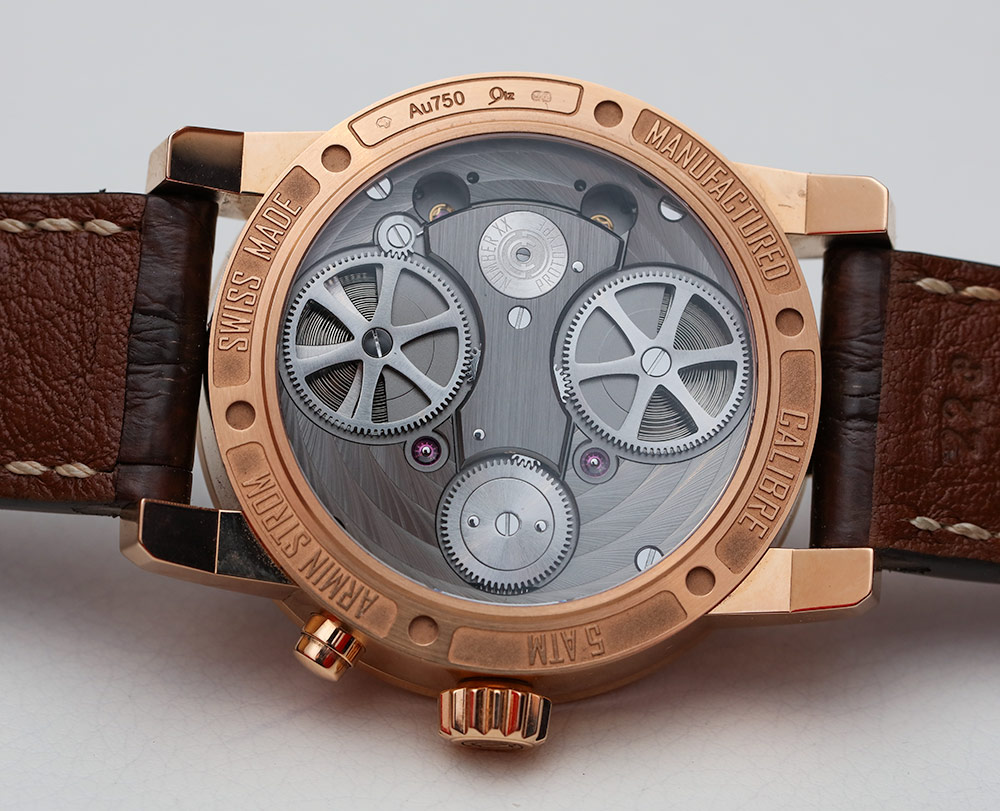
The resonating balance wheels are part of Armin Strom’s new ARF15 movement, which is developed and manufactured in-house. Research and development took over two and a half years and a large part of it went towards finding the optimal shape for the resonance clutch. It is a hand-wound movement consisting of 226 components and has a power reserve of 48 hours delivered by two mainspring barrels, which are clearly visible via the sapphire display case back. The movement is neatly decorated with finishes like perlage, circular graining, Côtes de Genève, mirror polishing, and brushing to create a modern and technical look.
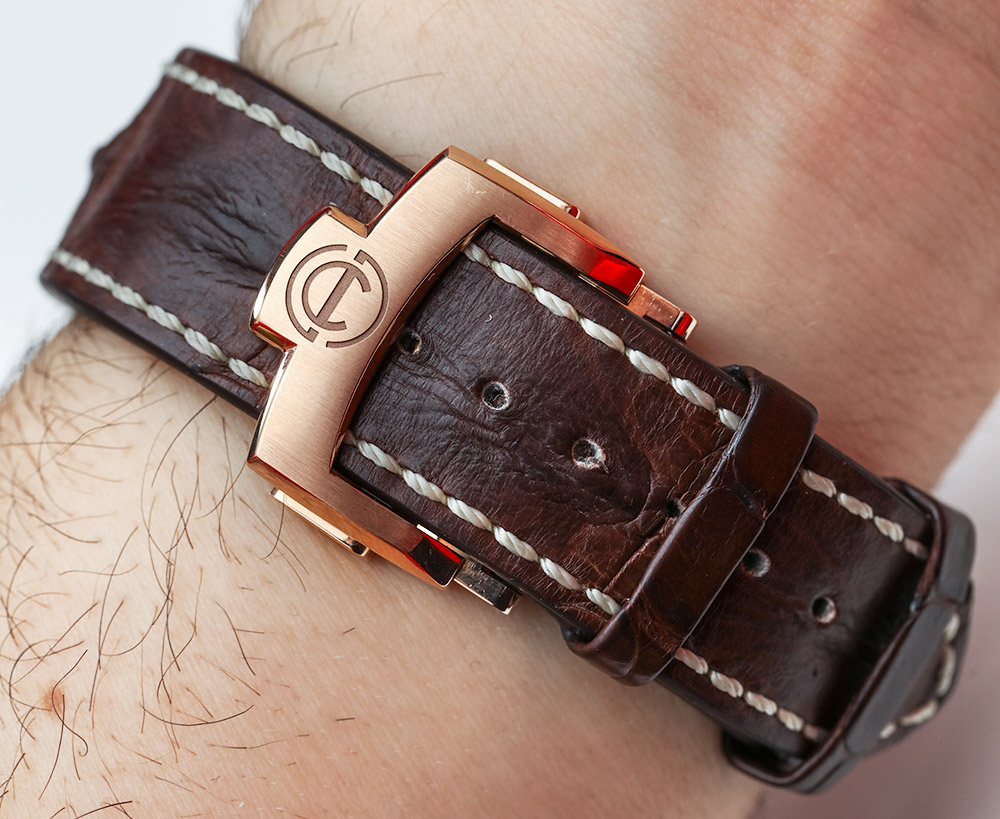
There’s quite a lot to like about the new Mirrored Force Resonance watch from Armin Strom. The most crucial of all is that it is one of the few watches available that employs the principle of resonance in its timekeeping, which makes it quite unique. This brings us to our second point, and that is despite the technical movement of the watch, it remains highly legible and practical, which to me is a sign of good design and a testament to the amount of work and thought that the team at Armin Strom have put into the watch.
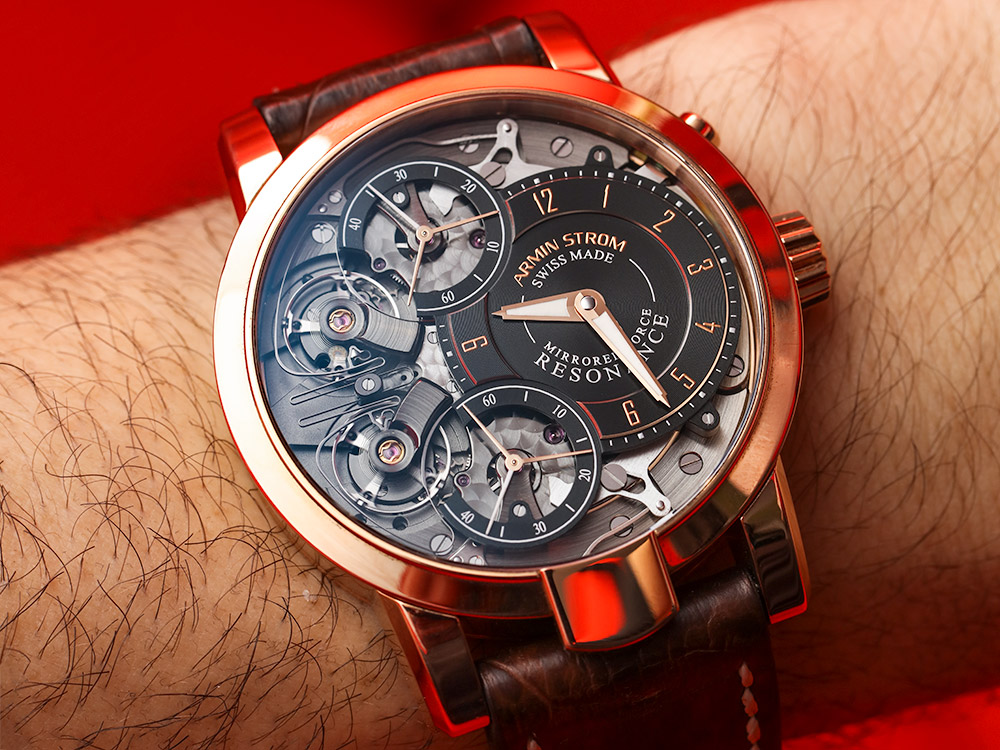
From a purely functional and practical point of view, I find it quite hard to fault this watch. It even has a zero-reset function to allow users to admire and see the effects of resonance at work. The only question here is do you like the way it looks? And that’s a purely subjective thing. I think it looks pretty nice, the dial, in particular, is mesmerizing to look at and very legible. If I were to nitpick, then I’ll say there’s not much to see from the case back side of the watch and that the finishing is a little cold. The Armin Strom Mirrored Force Resonance watch in 18k rose gold is limited to just 50 pieces and is priced at 67,000 CHF. arminstrom.com

